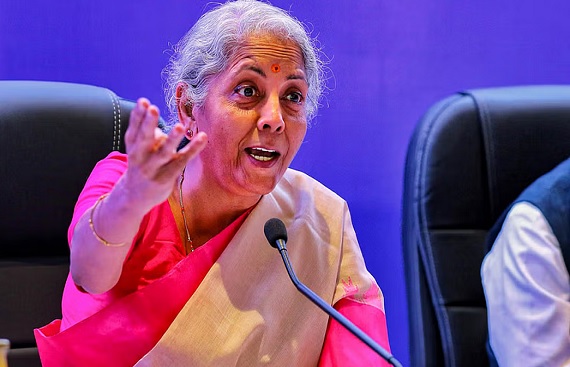90X DBT Surge and World's Highest Real-Time Payments in a Decade: FM Sitharaman
By
siliconindia | Thursday, 12 June 2025, 05:51 Hrs

- Direct Benefit Transfers rose from Rs 7,368 crore in 2013-14 to Rs 6.83 lakh crore in 2024-25.
- India processed Rs 260+ lakh crore in real-time payments with 18,600 crore transactions annually.
- Over 55.44 crore Jan Dhan accounts opened, 56% held by women, with deposits exceeding Rs 2.5 lakh crore.
In a remarkable testament to India's digital governance transformation, Finance Minister Nirmala Sitharaman announced a more than 90-fold increase in Direct Benefit Transfer (DBT) volumes over the past decade under Prime Minister Narendra Modi's leadership.
"From Rs 7,368 crore in 2013-14 to Rs 6.83 lakh crore in 2024-25, DBT has witnessed an exponential rise, ensuring every rupee directly reaches every citizen", Sitharaman stated via social media platform X.
Highlighting India's global leadership in digital transactions, she said that over Rs 260 lakh crore worth of real-time payments were processed in FY 2024-25. With approximately 18,600 crore transactions handled annually, India continues to outpace other nations in digital payment adoption.
Calling India’s digital journey 'nothing short of revolutionary', Sitharaman emphasized the shift towards a tech-first approach in governance. “From manufacturing to space tech, from digital payments to rural connectivity, the change is visible, impactful, and lasting. It’s about seamless governance and empowering citizens to build a ‘Viksit Bharat’”, she said.
Supporting this vision, RBI Deputy Governor M. Rajeshwar Rao highlighted that over 55.44 crore Jan Dhan accounts have been opened, with women holding 56 percent of these. As of May 21, total deposits in these accounts crossed Rs 2.5 lakh crore.
Digital payments continue their upward trajectory in FY 2024-25, growing 35 percent year-on-year by volume, reaching 60.81 crore transactions per day. Unified Payments Interface (UPI) alone accounts for 83.73 percent of these, underscoring the success of inclusive and innovation-driven financial systems.
The data collectively signals India’s transition into a digital-first economy driven by policy reforms, inclusive banking, and robust tech infrastructure.
